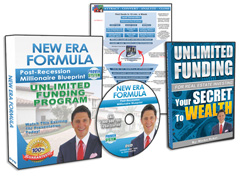
 To be and remain a successful real estate investor, you need to keep up with the operative state and federal laws that may or will impact what you do and how you do it. Unlike state laws that do vary from state to state, Dodd-Frank is federal law and that law will impact you no matter which state you or the real estate call home. This particular law has changed seller financing for investors.
To be and remain a successful real estate investor, you need to keep up with the operative state and federal laws that may or will impact what you do and how you do it. Unlike state laws that do vary from state to state, Dodd-Frank is federal law and that law will impact you no matter which state you or the real estate call home. This particular law has changed seller financing for investors.
In January 2014, the nearly nine hundred page Dodd-Frank Wall Street Reform and Consumer Protection Act went into effect. Created, in part, to correct shortcomings impacting the financing of consumer purchases of real estate, numerous headaches and concerns to investors and private lenders of all stripes have arisen, all in the guise of needed consumer protection.
First, a word about the Safe Act legislation that preceded Dodd-Frank. That law was implemented on a state by state basis covering who could write loan documents and requiring a seller offering financing to either be a mortgage loan originator or to utilize one if seller financing is part of the equation. The breadth and scope of Dodd-Frank went a whole lot further than the Safe Act did because for the first time, the law now affects the lender investor or other individual entity whereas the onerous regulations previously impacted institutional lenders not investors with stacks of lender disclosures required.
The new intent was consumer protection, with the lender having the burden of taking into account the borrowers’ ability to repay, taking the responsibility away from the borrower and drastically affecting how a borrower could be financed. Many see government overreach with this law as the posture and agenda of the borrower is now the lenders’ problem.
Anyone who extends consumer financing now comes under its purview. It matters not if you are a homeowner offering seller financing or that of a private lender or investor. Now, that lender must consider how the loan is written and if the buyer can readily repay the loan. That lender, if the law applies, must qualify the buyer, confirm current income, employment status, loan and other monthly obligations, alimony and child support responsibilities, residual income sources, and their debt to income ratio, with that ratio being 43% at a minimum. The law requires the standards to be reasonable, yet what may be reasonable is for a court to decide on a case by case basis. The old practice of checking a buyer out, running their credit, then doing the deal is no longer enough.
There are exceptions to the law. It may not affect an individual seller but investors must pay attention. You now have what the law defines as qualified and non-qualified loans. Balloon payments, high interest rates, short or negative amortizations are deemed non-qualified. The key is to write only qualified loans if the law likely applies to you. No terms exceeding 30 years and no prepayment penalties or a variable interest rate except as allowed by the law will do. So it is best to throw out variable interest rates and prepayment penalties even with qualified loans. You must always verify income and debt to income ratio.
It is certainly best to be exempt. The law only applies to consumer loans and buyers residing in the house. Investor to investor deals are not involved. Cash transactions are unaffected. Only seller financed ones from any source. The law does not apply to commercial deals, multifamily properties of five or more units, or vacant lots/land even if an owner occupied buyer.
The law promulgates rules among three categories. The first is to exclude the homeowner just trying to sell through creative financing, a one-time deal in one year’s time. If the transaction is a singular one and the seller is an individual, trust, or estate only, balloon payments are allowed and no proof of ability to pay need be established and documented. There is a note limitation that must be followed. The second category exempts any individual, trust, or estate as well as any LLC, corporation, partnership, or other legal entity that sells to no more than three owner occupants per year. Balloon payments are not permitted and the entity or individual must determine and show proof of the buyer’s ability to pay. There is the note restriction again. Sell to owner occupants more than three times in a year and category three is applicable and not only do those sellers must comply with category two, they must have either mortgage loan originator status or one be hired who is.
There are very stiff and onerous penalties for non-compliance. If an investor is threatened by a non-compliance claim, it is not the government, but the angry buyer you need to be wary of. If adjudicated to be in violation by subsequent court action, that investor is assessed the last three years of payments, the return of the down payment, attorney fees, yours and the angry buyer’s, court costs, and interest.
Be certain you are exempt from the import of the law. Make it your business to consider the buyer’s ability to pay if not an investor but an owner occupier. Always implement the good practice to do a credit check, confirm employment and the ability to repay. Make and maintain accurate records. Finally, to make sure the buyer is less likely to go after you, make sure the prepared documents, in bold type print, exclaim ” Dodd-Frank does not apply to this transaction”.
No need to panic. This law is just another wrinkle on consumer protection and investors can protect themselves by simply knowing and following the law.
Request FREE Funding Kit and Discover How To Legally Bypass Banks And Gain Direct Access To "No-Credit-Required" Funding You Can Use To Achieve Your Financial Freedom... Start Now!












